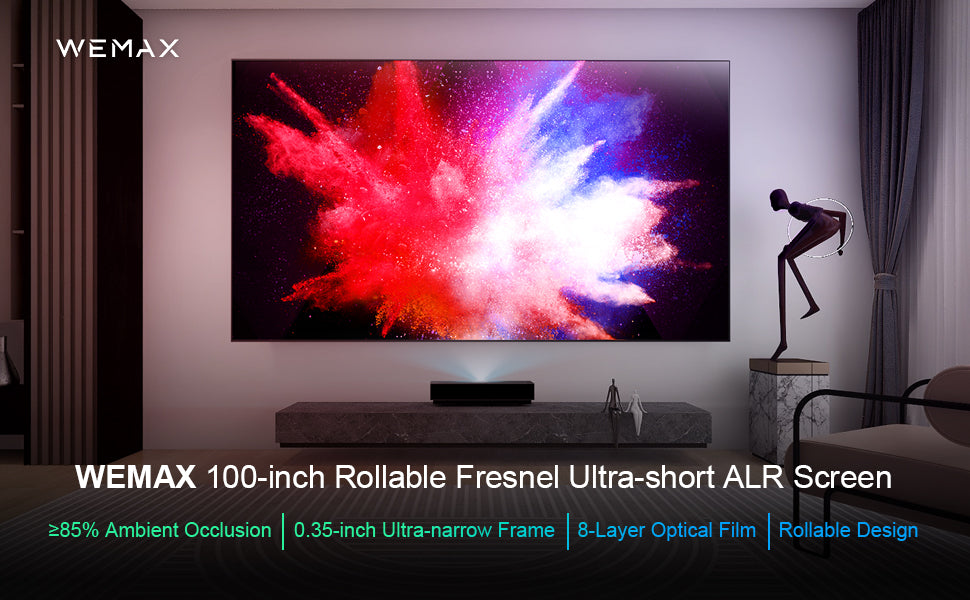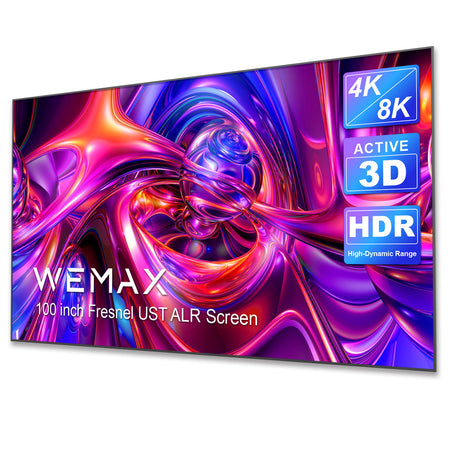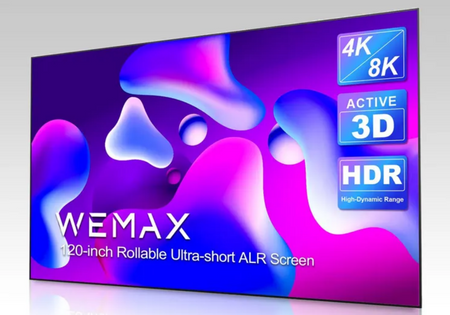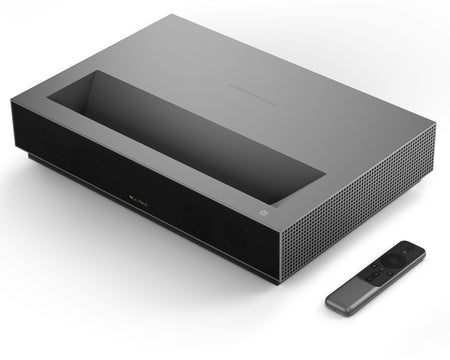This is contributed by @Eugene Kim
General Notes: This segment is relatively new. There are not many manufacturers who have miniaturized true Laser-based projector technology. ALPD & the partnership with Wemax is unique. There are companies like Epson who have made a small Laser-based projector using different kind of technology, but it is still larger in size. Other companies have not yet invested money to target this segment and have focused mainly on LED technology. As a result, I focused a lot of this article on the technology differences, improvements and trying to highlight how the Wemax Go / Go Advanced are truly niche and 1st to market this category & segment.
Introduction - Projector Technologies
There are 3 main projector light source technologies in the market today. Traditional lamp (which mainly uses electric charged mercury vapor gas in a glass bulb), LED (light emitting diodes commonly found in LCD TVs) or Laser (emits light through a process of optical amplification based on electromagnetic radiation). Before we get deeper into the pros and cons, first we should address how the light sources work in a projector.
A traditional lamp projector uses a white light bulb where the light is concentrated through a spinning color wheel which then provides the necessary primary red, green and blue lights which are passed onto an imaging chip (DLP, LCD or LCoS) which rapidly works to combine the image that we see on our projected screen. Due to the way the technology works, there is a lot of waste and heat generation. The lamp also has the least amount of usable light source hours compared to LED or Laser, which means it has to be replaced more frequently.

LED technology is prevalent in the modern TV today. It uses light emitting diodes that are charged by an electric current to produce light. It lasts a lot longer than traditional lamps and are much smaller in size leading to smaller, more efficient projector units. It also produces less heat and can often run a lot cooler leading to less fan noise as well. However, until the last few years, LEDs were unable to get as bright as traditional lamps leading to less ANSI lumens of output.
Laser projectors were previously found in movie theaters and commercial operations. They replaced the white light bulb & color wheel combination with primary colored RGB lasers. They were more energy efficient and were able to produce a brighter image with a wide color gamut which were critical to movie theater operators.
In the last decade, laser technology has made its way to home theater. There have been many implementations of the technology to make it viable and affordable for home use including hybrid LED + Laser implementations & introduction of ALPD technology. As of 2022, there are very few manufacturers who use the hybrid LED + laser implementation due to lack of real benefits to the end user from a picture quality or brightness standpoint with decreasing costs of both pure LED and Laser technologies.
Revolutionizing Laser Projection Technology - ALPD
The introduction of ALPD (Advanced Laser Phosphor Display) by Appotronics have revolutionized the adoption and access to Laser projectors in the Consumer market. It is the same technology used today in many of the top movie theaters around the world. As mentioned above, a commercial laser projector would use dedicated RGB lasers. This meant more $$$ and a larger size, which is okay for a movie theater.
For the consumer market, ALPD introduced the use of a laser-phosphor technology. With the introduction of ALPD 2.0 in 2012, there was a shift to using a blue laser that would energize a phosphor wheel that would emit yellow light (red + green primary colors make up yellow). The colors would be divided and illuminate the imaging chip (DLP - Texas Instruments Digital Light Processing) which uses micro mirrors (DMD - Digital Micro-mirror Device) to create an image. With the introduction of ALPD 3.0 in 2015, the single blue laser was replaced with a dedicated blue and red laser to further enhance the light source efficiency, color gamut and color brightness. It was developed to benefit the movie theaters but was made available to Consumers as well. ALPD 4.0 developed in 2018 continued to bring technology advancements with the introduction of dedicated RGB laser combined with phosphor technology to bring an even larger color gamut, higher contrast and increased light efficiency (over ALPD 3.0).

So what does this mean for Consumers? Access to movie theater level laser technology at a Consumer level price point & device footprint. Light source life remains consistent through most of its useful life (on average 20,000+ hours of use) compared to traditional and even some LED light sources which also means virtually no light source replacements and maintenance requirements for the useful life of the projector. Some other benefits include quieter operations due to higher efficiencies, especially compared to traditional lamps or high powered LEDs which can get really hot and fan noises becoming a distraction. Finally, price points have come down to attractive levels offering Laser projection technologies for home theater enthusiasts and Consumers alike.
Top Mini Laser Projectors in 2022
Today, there are many more options for Laser based projectors than in the past. UST (Ultra Short Throw), ceiling mount, and commercial-grade. However, one of the fastest growing markets is the mini or ultra portable segment where size and ability to take and use anywhere defines the segment. Historically, this market was dominated by LED based illumination technology due to the size constraints. However, a couple of manufacturers are attempting to bring Laser projection technology to this segment including all of the benefits.
Epson EF-100 Mini-Laser Streaming Projector w/ Android TV

The Epson EF-100 uses a 3-chip laser projection technology which is based off of LCoS (Liquid Crystal over Silicon) technology. It uses a laser light source and a 0.59” poly-silicon TFT Active Matrix panel to product a 1280 x 800 HD image. It is compact enough to put in a backpack and carry to your next viewing event! Some key specs below:
- 1280 x 800 HD native resolution
- 2,000 lumens
- 3-chip LCoS imaging technology
- 12,000+ hours light source life
- 3” x 9.1” x 3.6” (W x D x H)
- 6.0 lb
Epson EpiqVision Mini EF12 Smart Streaming Laser Projector

The Epson EF-100 brings true HD laser projection technology in a 3-chip design for 100% RGB color output in a compact, portable footprint. Built-in Android TV and sound by Yamaha bring you a theater like experience while features like auto picture skew and focus correction help bring a clear picture every time. Some key specs below:
- 1920 x 1080 Full HD native resolution
- 1,000 lumens
- 3-chip LCoS imaging technology
- 12,000+ hours light source life
- 9” x 6.9” x 5.3”
- 7 lb
Wemax Go Advanced
Where ultra portability meets ALPD Laser technology, meet the Wemax Go Advanced. Using a miniaturized version of ALPD, consumers get the benefits of laser phosphor technology including long lamp life and wide color gamut combined with enhanced brightness and contrast in a never before seen device footprint. Advanced features like automatic keystone correction & auto focus make setting up a breeze. One thing that makes this device stand out from others in this segment is the built-in battery allowing it to operate completely wire-free. Truly an industry first to bring together advanced technology typically found in larger projectors into such a small device.
- 1920 x 1080 Full HD native resolution
- 600 ANSI lumens
- DLP
- 25,000+ hours light source life
- 3,485 mAh built-in battery
- 6” x 4.6” x 0.97”
- 7 lb
Wemax Go

The device that introduced Laser technology in a an ultra small form factor. The Wemax Go is a capable projector at an attractive price point that caters to the ultra portable segment. It uses ALPD Laser technology and has the ability to run off of an external power bank. At the time of release it was one of the only Laser-based projectors that was in a form factor no larger than a typical smartphone.
- 960 x 540 native resolution w/ 1080p down-scaling
- 300 ANSI lumens
- DLP
- 25,000+ hours light source life
- 9” x 3.2” x 0.97”
- 66 lb






Comments (0)
Back to Tips and Tricks